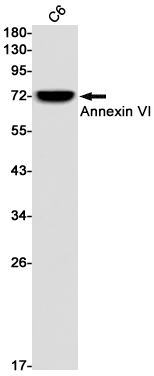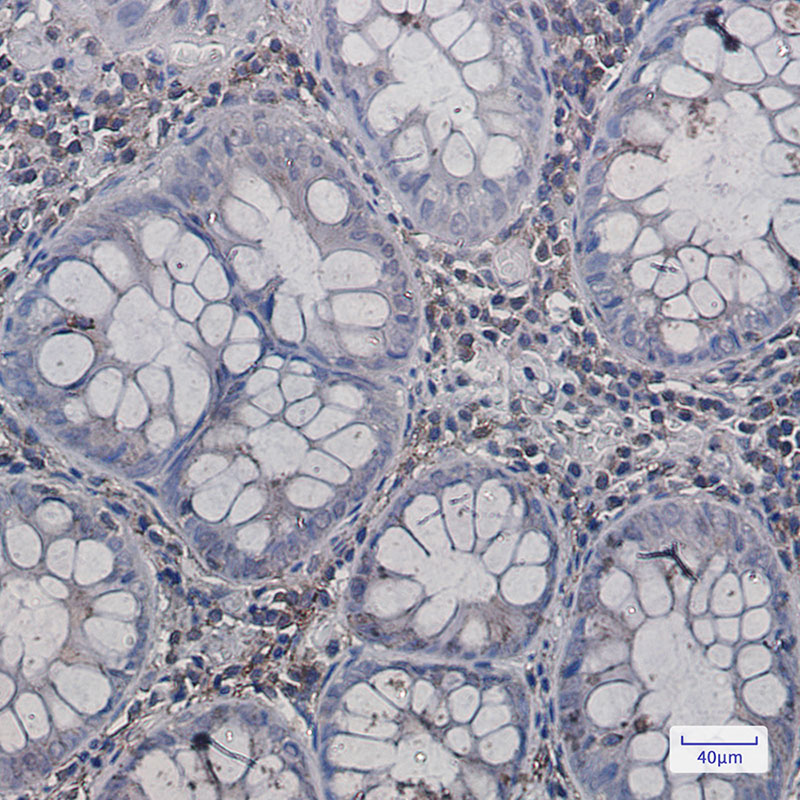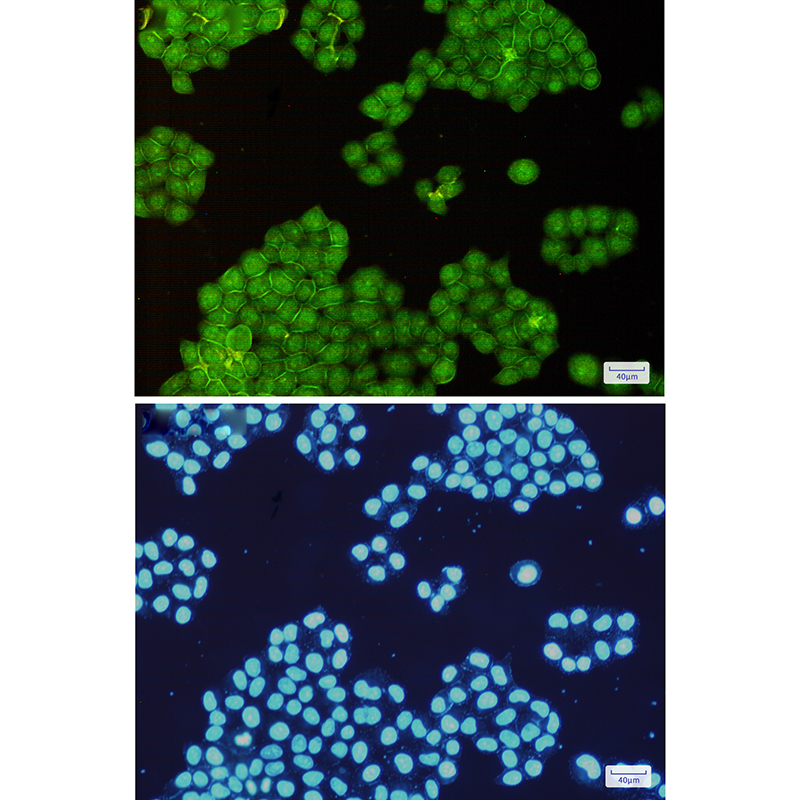


| WB | 咨询技术 | Human,Mouse,Rat |
| IF | 1/20 | Human,Mouse,Rat |
| IHC | 1/50-1/100 | Human,Mouse,Rat |
| ICC | 1/50-1/200 | Human,Mouse,Rat |
| FCM | 咨询技术 | Human,Mouse,Rat |
| Elisa | 咨询技术 | Human,Mouse,Rat |
| Aliases | p68; p70; ANX6; CBP68; CPB-II |
| Entrez GeneID | 309 |
| WB Predicted band size | Calculated MW: 76 kDa; Observed MW: 70 kDa |
| Host/Isotype | Rabbit IgG |
| Antibody Type | Primary antibody |
| Storage | Store at 4°C short term. Aliquot and store at -20°C long term. Avoid freeze/thaw cycles. |
| Species Reactivity | Human,Rat |
| Immunogen | A synthetic peptide of human Annexin VI |
| Formulation | Purified antibody in TBS with 0.05% sodium azide,0.05%BSA and 50% glycerol. |
+ +
以下是关于Annexin VI(Annexin A6)抗体的3篇参考文献及其简要摘要:
---
1. **标题**:*Annexin A6 modulates TGFβ signaling and regulates epithelial-mesenchymal transition in breast cancer cells*
**作者**:Li X, et al.
**摘要**:研究利用Annexin VI抗体分析其在乳腺癌细胞中的表达,发现Annexin A6通过调控TGFβ信号通路影响上皮-间质转化(EMT),提示其可能成为癌症治疗的潜在靶点。
---
2. **标题**:*Annexin A6 interacts with p120-catenin and regulates endocytic trafficking of E-cadherin in polarized epithelial cells*
**作者**:Petzelbauer E, et al.
**摘要**:通过Annexin VI抗体的免疫共沉淀实验,揭示了Annexin A6与p120-catenin的相互作用及其在E-钙粘蛋白内吞运输中的作用,为细胞极性维持机制提供了新见解。
---
3. **标题**:*Annexin A6 deficiency induces mitochondrial dysfunction and accelerates atherosclerosis in mice*
**作者**:Garcia-Redondo AB, et al.
**摘要**:研究使用Annexin VI抗体敲除小鼠模型,发现Annexin A6缺失导致线粒体功能异常并加速动脉粥样硬化进程,表明其在心血管疾病中的保护性作用。
---
4. **标题**:*Annexin A6-dependent pH regulation promotes lysosomal cholesterol efflux in macrophages*
**作者**:Chao H, et al.
**摘要**:通过Annexin VI抗体介导的基因沉默实验,证明Annexin A6通过调节溶酶体pH值促进巨噬细胞胆固醇外流,为代谢性疾病研究提供了分子机制支持。
---
以上文献均涉及Annexin VI抗体的实验应用,涵盖癌症、细胞运输、心血管及代谢疾病等领域。如需具体DOI或期刊信息,可进一步补充检索关键词查询。
Annexin VI (ANXA6) is a member of the annexin family of calcium-dependent phospholipid-binding proteins, which are involved in diverse cellular processes, including membrane trafficking, signal transduction, and cytoskeletal organization. Structurally, Annexin VI contains eight conserved annexin repeats (unlike most annexins with four repeats), forming two distinct domains connected by a flexible linker. This unique structure allows it to interact with cellular membranes and regulate membrane-cytoskeleton dynamics, vesicle fusion, and calcium signaling.
Functionally, Annexin VI is implicated in endocytosis, exocytosis, and cholesterol homeostasis, particularly in organelles like the plasma membrane, endosomes, and lysosomes. It interacts with proteins such as caveolin and participates in lipid raft organization. Dysregulation of Annexin VI has been linked to pathologies including cancer, cardiovascular diseases, and diabetes. For instance, it acts as a tumor suppressor in some cancers but promotes metastasis in others, depending on cellular context.
Annexin VI antibodies are essential tools for studying its expression, localization, and molecular interactions. They are widely used in techniques like Western blotting, immunofluorescence, and immunohistochemistry to investigate its role in disease mechanisms or cellular pathways. Researchers also employ these antibodies to explore therapeutic targeting potential or diagnostic applications, given its association with disease biomarkers.
×